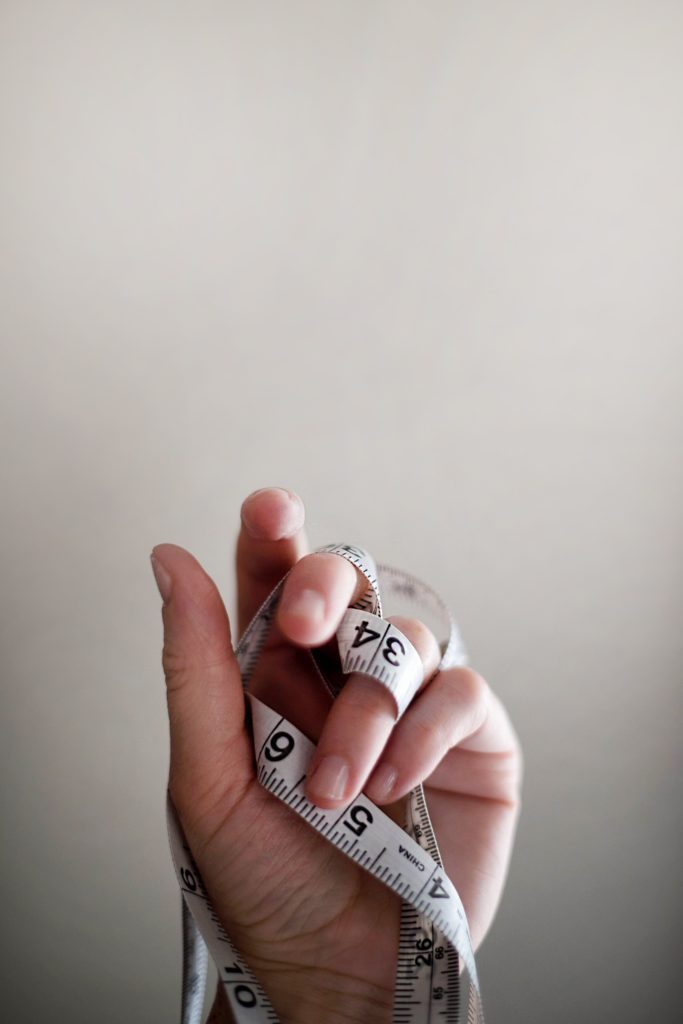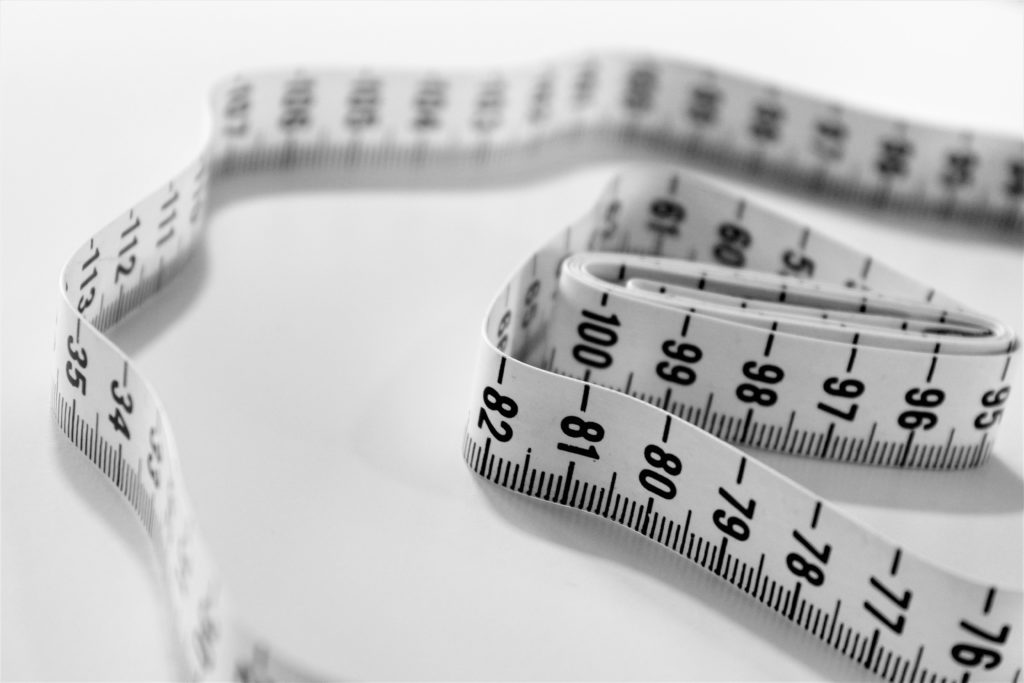Self-Evaluation for Combatting Frustration

“I’ve tried everything and can’t lose weight.”
I read these words 100’s of time per week, and it kills me slowly because I can feel the frustration through my screen shared by so many women as they try to change their bodies, or find self-love and acceptance. It’s really discouraging to feel like you’re spinning your wheels for nothing.
Been there? I’m willing to bet if you’re reading this, you’re nodding your head with a resounding, “Yes.”
Good news, bish. I got your checklist for troubleshooting that will help right your course.
The moment a client or follower says, “Nothing works for me,” I mentally roll up my sleeves and ask the questions below to get to the ROOT of the problem(s). I’m not a Band-Aid or quick fix kind of girl. I like to dig, and then I like to climb.
By the time you get to the end of this article, it’s my hope you’ve gained clarity on your roadblocks and how to plow through them.
Review Your Intake
A lot of professionals and memes alike claim that nutrition is 80% of your program when it comes to meeting any goal. I wholeheartedly disagree.
It’s is 100%.
If your nutrition is off, everything else will be too.
Have you heard the phrase, you can’t out train a bad diet? It’s true. Think about it, it will take you HOURS to “work off” an indulgence, yet minutes to consume it. I compare overeating to credit card debt. It’s an uphill battle that is designed to work against you – and all but impossible to beat unless you adhere to a STRICT budget and pinch your pennies.
- If your goal is to gain muscle, you must be in a surplus. Are you? If you’re not, you must get there. If you’re not putting on weight, you’re not in a surplus – EVEN IF YOU THINK YOU ARE.
- Want to lose fat? You must be in a deficit. Are you? If you’re not, you HAVE to cut. If you’re not losing scale weight, you’re not in a deficit – EVEN IF YOU THINK YOU ARE.
Bene Brown claims, “Your body keeps score, and it always wins.” She’s right. Stop thinking you know better and ignoring the red flags your body is signaling you. No formula is perfect, so you should consistently evaluate your numbers until you find YOUR ranges and ceilings.
The above is a NON-NEGOTIABLE regardless of your lifestyle. Vegan, paleo, pescetarian, keto, flexible dieting, intermittent fasting, Whole 30 – I mean I could go on, but you get the idea. Your nutrition has to be in check to meet your goals.
Here are some resources within this blog and my Instagram to help you with your evaluation:
The above assumes you are not experiencing any hormonal imbalances or extenuating circumstances. If you think there is an underlying physical problem, deficiency or disorder work with a healthcare professional to run a panel of bloodwork and thoroughly understand the results.
Look at Your Training
After you get your intake under control and confirm you’re on the right track in the kitchen, think about your fitness. It’s the next piece of the puzzle.
Your body adapts to stress and resistance over time (plateau!), so you must continually challenge yourself. If you’re a beginner, it’s A LOT easier to realize change and pretty much any consistent activity will get you there. The more advanced and experienced you become, the harder it is to achieve change, and therefore you have to be DELIBERATE and specific in your training.
Like your nutrition, your workouts must correlate with the results you want. If you’re looking to build a hard and toned body, guess what? Exclusively spinning, running, going to yoga, or barre class will NOT get you there. Do not get me wrong – these workouts are not inherently bad, but they’re potentially counterproductive. Likewise, the “swipe” workouts on IG that are increasing in popularity on Instagram give options and variety, but will they give you the tools you need for success? Questionable. If you’re doing a different workout every day with no opportunity to build or progress, that’s only going to get you so far.
Understand if the work you’re doing doesn’t align with the changes you want to see you’ve got to get out of your comfort zone and get with a new program.
Here are some resources within this blog:
- Achieving Progressive Overload
- How to Build Your Own Strength Building Workout
- The Importance of Strength Conditioning
- The 101 Body Recomposition
- Finding YOUR Perfect Workout
- Busting Through Plateaus
Evaluate Your Level of Adherence with Data
Once you’ve got your nutrition and fitness protocols under lock and key, you’ve got to EXECUTE. Consistently.
If you’re serious about achieving a goal, you’ve got to have SOME form of measurement to evaluate efficacy. That could be inches, pounds, pictures, etc. Track your progress with hard evidence as opposed to a mental log – you will forget, and your memory will recall your experience incorrectly. That’s just how it is.
GET THIS. When it comes to evaluation and adherence, you have to be honest. Most people will underreport their consumption, and OVER report their level of activity. I would ditch your wearable – IT’S NOT ACCURATE LOL – and stick to good old journaling.
Track your workouts via progressive overload and log your meals. Very few people can eyeball their food and report correctly on portions. Weigh your food and KNOW what your consumption is rather than assuming or guessing. Do NOT think of this as an emotional or obsessive process – it’s educational and serves as a check and balance system. Simple as that.
The above assumes measurements are not triggering.
Here are some resources within this blog:
Consider Your Source
Who are you getting your information? Are you getting your advice from a credentialed professional or taking what a fashion blogger who lost 10 pounds one time did as gospel? I am NOT putting anyone down, and I’m not insulting anyone’s experience, but I am saying there is A LOT of bullshit on the Internet. We live in a PDF culture where cookie cutter “guides” are mainstream, and sometimes they’re sufficient – until they’re not. Remember what I said earlier? Sooner or later, your body adapts. If your trainer, influencer or PDF cannot tell you how to apply whatever information they’re disseminating to YOU, your body, your experience, and YOUR evolution…well. Bai.
Review Your Timeline
Consistency is critical, and a LOT of times clients do not give their program enough time to “work.” Change happens so much slower than you want it to, especially if you’re more experienced. 30-days is a good start, but it’s honestly nothing when you think about the course of your LIFETIME. When evaluating progress, daily or weekly feedback, do not long-term trends make.
I would say four weeks of CONSISTENT adherence is the MINIMUM duration even to consider changing your program, and only small changes at that. Approximately 12 to 16-weeks of CONSISTENT adherences is my usual best practice to scrap something or dissect a plan that’s not effective.
On the other hand, if you’ve been dieting for FOREVER, you’ve got to take a break. Like your fitness, your body adapts. If your body has adapted to a low caloric balance, you’ve got to get out of it to allow your body to respond. Diet up to diet down. True story.
Here are some resources within this blog:
Identify Pitfalls and Look for Areas of Opportunity
If adherence is your biggest hang-up, you’ve got to pull back. I know that sounds counter-intuitive. But is the ONLY way to get on track.
If a caloric deficit is too aggressive to the point where you’re starving and binging, you’ve got to eat more. Trust me – the 100-300ish calories you may add to your balance is A LOT less than a binge at 10 PM.
If your program calls for six weekly workouts and you can barely make 2, and therefore you don’t go to the gym at all because you figure “what’s the point” – you’ve got to scale back. Success makes you feel happy, and those feelings of happiness contribute to consistency. Small wins, WIN. TRUST ME.
Here are some resources within this blog:
In conclusion:
There you have it. Your checklist to troubleshoot your frustration when you feel like you’ve tried “everything.” Pay attention to the feedback your body is giving you, identify the pain points in your experience, and then work around all of them. There are thousands of ways to approach health and fitness, and the best ones are the ones that work for YOU.







Responses